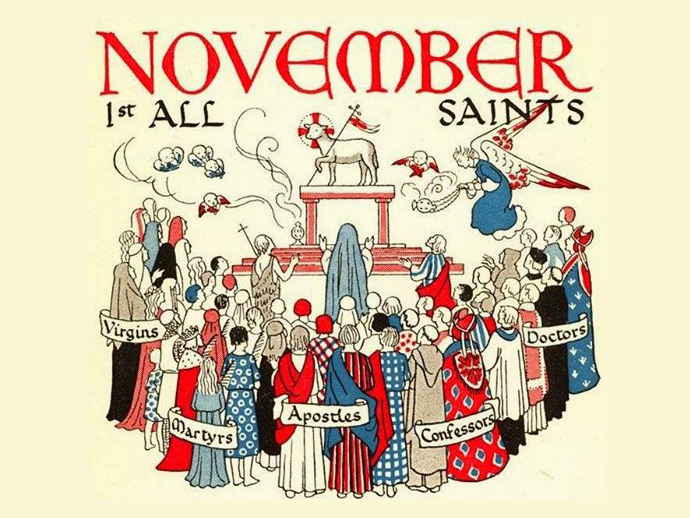Mount Calvary Church
A Roman Catholic Parish
The Ordinariate of the Chair of St. Peter
Eutaw Street and Madison Avenue
Baltimore, Maryland
All Saints’ Day
November 1, 2018
7:00 P.M.
_____________________
Common
Missa Aeterna Christi Munera, Palestrina
______________________
Anthems
Tomas Luis de Victoria (1548-1611)
The first two verses of the hymn are a description of the saints arrayed before God’s throne, asking the question: who are they? Verse three begins to answer the question. So verse four is an answer to the question of who are the saints? What is wonderful about verse four is that it describes people who do not simply submit to God’s will: “who in prayer full oft have striven with the God they glorified.” In other words, their prayer has often been an intense struggle with God. It’s a powerful description of one aspect of a devout Christian life. Like Jacob, we often wrestle with God about His seeming absence in our anguish; Jesus too cried “my God, my God, why hast Thou forsaken me?”
Here is the Wakefield Cathedral Choir.
There is a land of pure delight. This hymn, by Isaac Watts (1674—1758), reminds of why All Saints’ Day and All Souls’ Day are adjacent: only through death can we come to the realms of eternal life. For a Christian, death is painful, but we are consoled by the hope that once we cross Jordan’s stream we shall be forever with our Father in the true Canaan, the Promised Land.
Here is the tune CAPEL by Ralph Vaughn Williams
For all the saints is by the Anglican bishop William Walsham How (1823—1897), who was a great friend of the poor of his diocese, and was known variously as ‘the children’s bishop’, ‘the poor man’s bishop’ and ‘the omnibus bishop’ (the last referring to his preferred means of travel about his diocese).
This hymn derives much of its power from its ability to capture the spirit of the Church Militant here on earth, using imagery from the book of Revelation. Vaughan Williams composed the tune SINE NOMINE (‘without a name’) for this hymn. It has been suggested that the name of the tune refers to the countless number of saints who are not remembered by name but who are part of the ‘glorious company’.
Here is the St. Edmundsbury Cathedral Choir.
